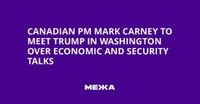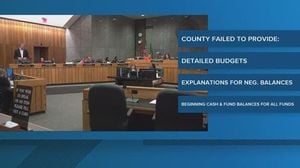Canadian Prime Minister Mark Carney is set to return to Washington, D.C. on Tuesday, October 7, 2025, for a high-stakes meeting with U.S. President Donald Trump. The visit, described by Carney’s office as a "working visit," comes at a moment of mounting economic tension and political pressure, with tariffs battering key Canadian industries and opposition leaders demanding results from months of trade talks. The prime minister will arrive in the U.S. capital on Monday evening, hoping that a face-to-face encounter can break the deadlock that has defined Canada-U.S. relations in recent months.
According to a statement from Carney’s office reported by CBC, "The Prime Minister's working visit will focus on shared priorities in a new economic and security relationship between Canada and the U.S." The meeting follows public consultations launched last month as both countries prepare for the first joint review of the Canada-U.S.-Mexico Agreement (CUSMA), the trilateral trade pact set to expire in 2026.
But the backdrop is anything but routine. It has been more than two months since Canada and the United States missed a jointly agreed deadline to reach a new trade deal. In an attempt to move talks forward, Carney rescinded a tax on large U.S. technology firms at Trump’s request and dropped retaliatory tariffs. Yet, as of now, no breakthrough has been achieved. "I'm hoping we can get progress before the review process formally engages," Canada-U.S. Trade Minister Dominic LeBlanc said last week, as quoted by CBC. "But time will tell us if my optimism is misplaced."
The stakes are high for Carney, who won the April 2025 election with a promise to stand up to Trump and secure a better deal for Canadian workers. But as tariffs continue to bite—particularly in the auto, steel, aluminum, lumber, and energy sectors—the pressure at home is intensifying. Unemployment in Canada hit 7.1% in August, the highest level since May 2016 outside the pandemic period, according to government data cited by CNN. Conservative opposition leader Pierre Poilievre has been vocal in his criticism, accusing Carney of failing to deliver on a promised agreement by July 21. "Where is the win? It has been a gigantic bait-and-switch. We were sold this brilliant negotiator. Where is it?" Poilievre demanded on Thursday, as reported by CBC.
Trump, for his part, has shown no signs of relenting on his aggressive tariff agenda. Just this week, he imposed new tariffs on Canadian softwood lumber, timber, kitchen cabinets, and other furniture shipments, adding to the countervailing and anti-dumping duties already in place. These measures have hit Canadian producers hard. The aluminum and steel industries have faced 50% tariffs for months, with steel production dropping by 30% in May 2025. In response, the federal government announced a $400 million loan to Algoma Steel to keep operations running and help the company transition away from reliance on U.S. markets.
Carney’s approach to negotiations has evolved over time. While he initially sought a sweeping trade and security pact, he has since lowered expectations, focusing instead on sector-specific relief. "Last month, Carney said he's pursuing a series of smaller deals to try and get sectors including metals, auto and lumber some relief from Trump's tariffs," reported CBC. Unlike the U.K. and European Union, which accepted baseline tariffs as part of their agreements with the U.S., Canada has refused to accept any deal that includes a baseline tariff. Carney has repeatedly argued that Canada already enjoys the best trade terms with the U.S., with 85% of Canadian exports crossing the border tariff-free. Still, he acknowledges the urgent need for relief in the hardest-hit sectors.
The relationship between Carney and Trump has been marked by both tension and pragmatism. Carney has said he is in regular contact with Trump, including through text messages, and this week’s meeting is seen as a crucial opportunity to advance the stalled talks in person. It will be Carney’s second visit to the White House since taking office; during his first visit in May, Trump immediately raised the prospect of closer ties and even floated the idea of annexation, suggesting Canada could become the 51st state of the United States.
The "51st state" notion, though largely seen as political theater, has resurfaced repeatedly. During a speech to military leaders on Tuesday, September 30, Trump again floated the idea, linking it to his proposed "Golden Dome" missile defense system. "Canada called me a couple of weeks ago. They want to be part of it. To which I said, well, why don't you just join our country? Become 51, become the 51st state and you get it for free," Trump said, as reported by multiple outlets including CBC and CNN. Carney, for his part, has consistently denied any intention of pursuing annexation, telling CNN’s Christiane Amanpour that Trump "admires Canada" and that the notion of annexation was no longer on the table. "He admires Canada. I think it’s fair to say, maybe for a period of time he coveted Canada," Carney said.
Beyond trade, the meeting will also address shared security priorities. With the old partnership—built on deep economic integration and tight security cooperation—now in question, Carney has sought to diversify Canada’s alliances. He has strengthened engagement with Britain and France and launched joint radar projects with Australia for Arctic defense, moves that reflect a broader shift in Canadian foreign policy. "The old relationship we had with the United States, based on deepening integration of our economies and tight security and military cooperation, is over," Carney declared in March, shortly after Trump imposed a 25% tariff on cars and parts, as reported by CNN. "It’s clear the US is no longer a reliable partner."
Still, Carney remains hopeful that domestic pressure within the United States—from senators, governors, business leaders, and unions—could help bring the Trump administration to the table. "We are confident that the domestic pressure from senators, governors, business leaders, union leaders, in the United States will also create potentially an opportunity for us to come to an agreement with the American administration," said Dominic LeBlanc, Canada’s top trade negotiator, while testifying before a parliamentary committee.
As the leaders prepare to meet, the future of the Canada-U.S. economic and security relationship hangs in the balance. Both sides are entering the talks under significant pressure, with Carney seeking tangible relief for Canadian industries and Trump determined to defend his hardline tariff policies. Whether this latest round of negotiations will yield a breakthrough or simply prolong the uncertainty remains to be seen. But one thing is clear: the stakes for both countries—and for the thousands of workers and businesses caught in the crossfire—could hardly be higher.




